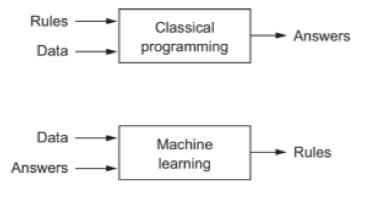Properties
Three Key Components
- Representation
- Declarative & Procedural knowledge
- Typically human-readable symbols
- Reasoning
- Ability to solve problems
- Express and solve range of problems and types
- Make explicit and implicit information known to it
- Control mechanism to decide which operations to use if and when, when a solution has been found
- Learning
An AI system must be able to
- Store knowledge
- Apply knowledge to solve problems
- Acquire new knowledge through experience

Expert Systems
- Usually easier to obtain compiled experience from experts than duplicate experience that made them experts for network
Information Processing
Inductive
- General patterns and rules determined from data and experience
- Similarity-based learning
Deductive
- General rules are used to determine specific facts
- Proof of a theorem
Explanation-based learning uses both
Classical AI vs Neural Nets
Level of Explanation
- Classical has emphasis on building symbolic representations
- Models cognition as sequential processing of symbolic representations
- Neural nets emphasis on parallel distributed processing models
- Models assume information processing takes place through interactions of large numbers of neurons
Processing style
- Classical processing is sequential
- Von Neumann Machine
- Neural nets use parallelism everywhere
- Source of flexibility
- Robust
Representational Structure
- Classical emphasises language of thought
- Symbolic representation has quasi-linguistic structure
- New symbols created from compositionality
- Neural nets have problem describing nature and structure of representation
Symbolic AI is the formal manipulation of a language of algorithms and data representations in a top-down fashion
Neural nets bottom-up
